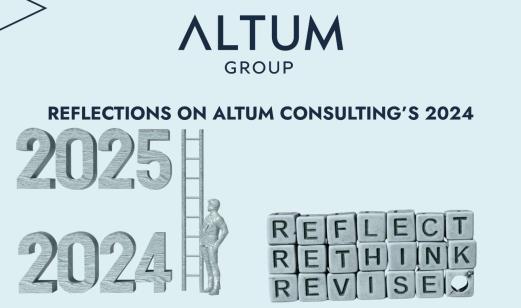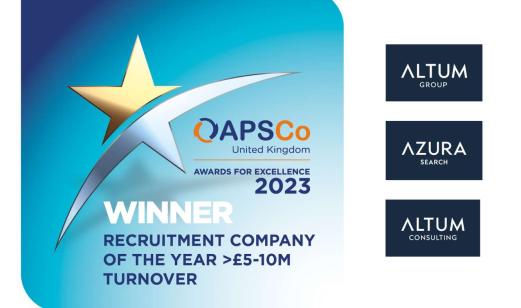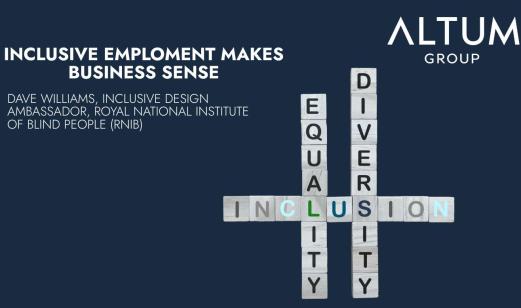
The quiet power of the boardroom: steering strategy when it matters most
By Lieke Bos, Consultant at Azura.
After years of advising leaders and boards on culture, performance, and long-term planning, I have recently stepped into the world of executive and non-executive search. In my conversations with executives, many of whom are exploring new external opportunities, one theme has emerged consistently as a push factor: the desire for a clear north star.
Some describe it as a missing strategy. Others mention ongoing leadership changes creating confusion around future direction. For many, it is simply a sense that the business no longer knows what it stands for, or where it is going. While this can sometimes be a polite way to frame a decision to leave, the consistency of this theme across companies and industries warrants attention.
Why clarity matters more now
Context is crucial. We are now five years on from COVID-19, which reshaped how people think about work, leadership, and life. Add to that an unsettled global economy, the relentless pace of political change, and headlines filled with layoffs from companies that once felt unshakable, and it is no surprise that people are craving stability. In this environment, a clear sense of purpose is not a luxury; it is an anchor to hold onto when the external world feels uncertain.
People are seeking clarity. They want to believe in the direction of travel. They want to know that leadership is not just reacting but consciously shaping the future, and that their business can weather the geopolitical and economic challenges and uncertainties it encounters. That responsibility does not rest solely with the CEO and executive team, it is also about the board.
The power of the board is often overlooked
In too many companies, the board is still seen as distant, focused solely on oversight, governance, and risk. While these aspects are crucial for boards to focus on, being perceived to focus solely on these parameters can make the board feel disconnected from the day-to-day decisions that shape culture and direction.
Unlike the CEO or executive team, boards are not tied to the immediate demands of the business. They are uniquely positioned to take a longer-term view, challenge the leadership team’s assumptions, and ensure that decisions align with the organisation’s core objectives.
The best boards work with and support leadership to define and challenge long-term strategy. They bring outside-in perspectives, help identify blind spots early and hold executives accountable for direction as well as results. In 2025, that role is more critical than ever.
However, it is crucial to recognise that boards must strike a balance between oversight and empowering the executive team. Too much involvement can create tension and stifle innovation, while too little risks leaving blind spots unchallenged and allowing strategic opportunities to slip by unnoticed.
Reframing strategy amidst change
BP’s leadership changes, first with the abrupt CEO departure in 2023 and more recently with its search for a new Chair, reflect broader shifts in the energy landscape shaped by political, environmental, and geopolitical pressures. Since then, BP’s share price has notably underperformed compared to peers, signalling waning investor confidence and growing strategic uncertainty. The board now faces a pivotal governance challenge to realign the company’s long-term strategy in a way that is commercially sound and clearly articulated to its employees, customers, and other stakeholders, fostering confidence during these complex transitions. This moment illustrates how governance is not just about reacting to events but proactively ensuring strategic coherence during pivotal periods.
When boards help drive clarity and cohesion
During the pandemic, Airbnb’s board worked closely with executive leadership to take fast, decisive action. This included significant cost-cutting and operational streamlining focused on the core business. These difficult decisions were communicated thoughtfully, with transparency that helped preserve trust. The board played an active governance role: staying present, supporting leadership, and keeping focus on the company’s long-term purpose. This partnership enabled a strong rebound, highlighting the value of board alignment and resilience in moments of crisis.
At Microsoft, the board has played a steady, strategic role in enabling long-term innovation, particularly in its deliberate approach to AI. Rather than chasing trends, the board backed sustained investment and carefully chosen partnerships, helping the company scale responsibly while staying focused. This clarity has paid off: under Satya Nadella’s leadership, Microsoft has outperformed its peers, driven by its ability to capitalise on emerging technologies like AI and cloud computing. It is a strong example of how thoughtful, long-term governance reinforces direction and resilience in a rapidly evolving landscape.
What employees feel when strategy falters
Employees may never be present in the boardroom or read the board papers, but they certainly feel its effects. That can show itself in various ways, for example through disengagement, frustration, or the loss of top talent.
When strategy changes too often (or lacks clear expectation), people start to fill in the gaps themselves. Trust erodes, energy fades, and the best people begin to explore other options. Many of the executives I speak to are not simply looking for a promotion or a bigger team. They are looking for meaning and the sense that they are helping to build something coherent that will endure. And while purpose often starts with the CEO, it is the board that ensures it lasts.
Because when things change (as they inevitably do) it is the board’s job to ask: Is this still the direction we believe in? Is the strategy still clear? Are we communicating that clarity both inside and outside the business?
Boards as stewards of clarity
Strong boards do more than guard against risk; they help shape ambition. They challenge leadership teams to think long-term and ensure that decisions still make sense in the broader context of purpose and direction.
While no strategy is without its challenges, boards that align behind a clear vision give leadership the best chance to navigate these complexities and drive sustainable growth. In an environment defined by disruption, boards that focus on clarity and purpose are the ones that help companies thrive in difficult circumstances.
In an unpredictable world, boards that maintain clarity and purpose are not just guiding businesses, they are providing a bedrock on which leaders and employees can build, creating an environment where talent thrives and strong performance follows.









